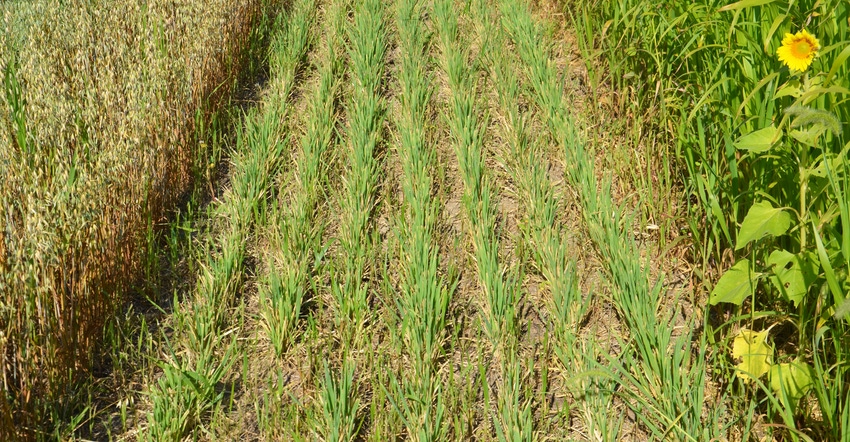September 7, 2018

By Don Donovan
The definition of “armor” in the Merriam-Webster dictionary is: 1) defensive covering for the body; especially: covering (as of metal) used in combat; 2) a quality or circumstance that affords protection; 3) a protective outer layer (as of a ship, a plant or animal, or a cable).
If you ask someone what the definition of armor is, they probably would give some version of the first definition. In soil health circles, the word is used more as it applies to the soil. All three definitions are appropriate when talking about armor for soil.
The definition calling armor a defensive covering is most common and obvious. Soil is susceptible to erosion, both water and wind, when left unarmored. How do you armor the soil? You do so by keeping it covered 365 days a year �— with cash crop and cover crop residue, and a growing cover crop through the winter when heavy, intense rains cause severe erosion.
Residue acting as a shield against heavy raindrops and growing roots holding soil together are both armor as a defensive covering. This defensive covering is physical — something you can see and know is valuable.
Dig deeper
Armor as a quality or circumstance is a bit more ambiguous, harder to see and takes a little more time to quantify. So how does this apply to no-till, cover crops and soil health?
Soil armored by crop and cover crop residue is protected from the sun, providing two benefits. The most obvious is slowing evaporation from the soil surface and holding moisture in the soil for use during periods of dry weather so your crop can take advantage.
What is a half-inch of moisture worth to you at the right time during a dry stretch of summer? Some old-timers call them “million-dollar rains.”
Soil temperature is also impacted greatly by armor. The biology in the soil normally likes a constant warm temperature, not exceeding 100 degrees F. Many unarmored soil temperatures can reach 125 degrees F or more, driving biology deeper in the soil or into dormancy.
Why is this important? Biology is what converts nitrogen in the soil into a usable form for your crop to use. No conversion equals crop stress equals lost yield equals lost profit.
Layers of protection
As a protective outer layer, armor on the soil provides a food supply for the macrobiology and microbiology in the soil. Residue on the surface is the sole food source for earthworms, which break down residue and start the process of feeding millions of tiny livestock in the soil.
These tiny organisms turn residue into usable and available nutrients for your cash crop. Lack of surface residue correlates to a greatly reduced number of earthworms in the soil, which leads to fewer available nutrients for your crop. Fewer available nutrients from the soil means more inputs in the form of commercial fertilizer and less profit in your operation.
Begin your journey to better soil health on your farm. Make armor an important part of your daily operation. For more information, contact your local soil and water conservation district or Natural Resources Conservation Service office, or visit www.in.nrcs.usda.gov.
Donovan is a district conservationist with the NRCS based in Parke County, Ind. He writes on behalf of the Indiana Conservation Partnership.
You May Also Like




